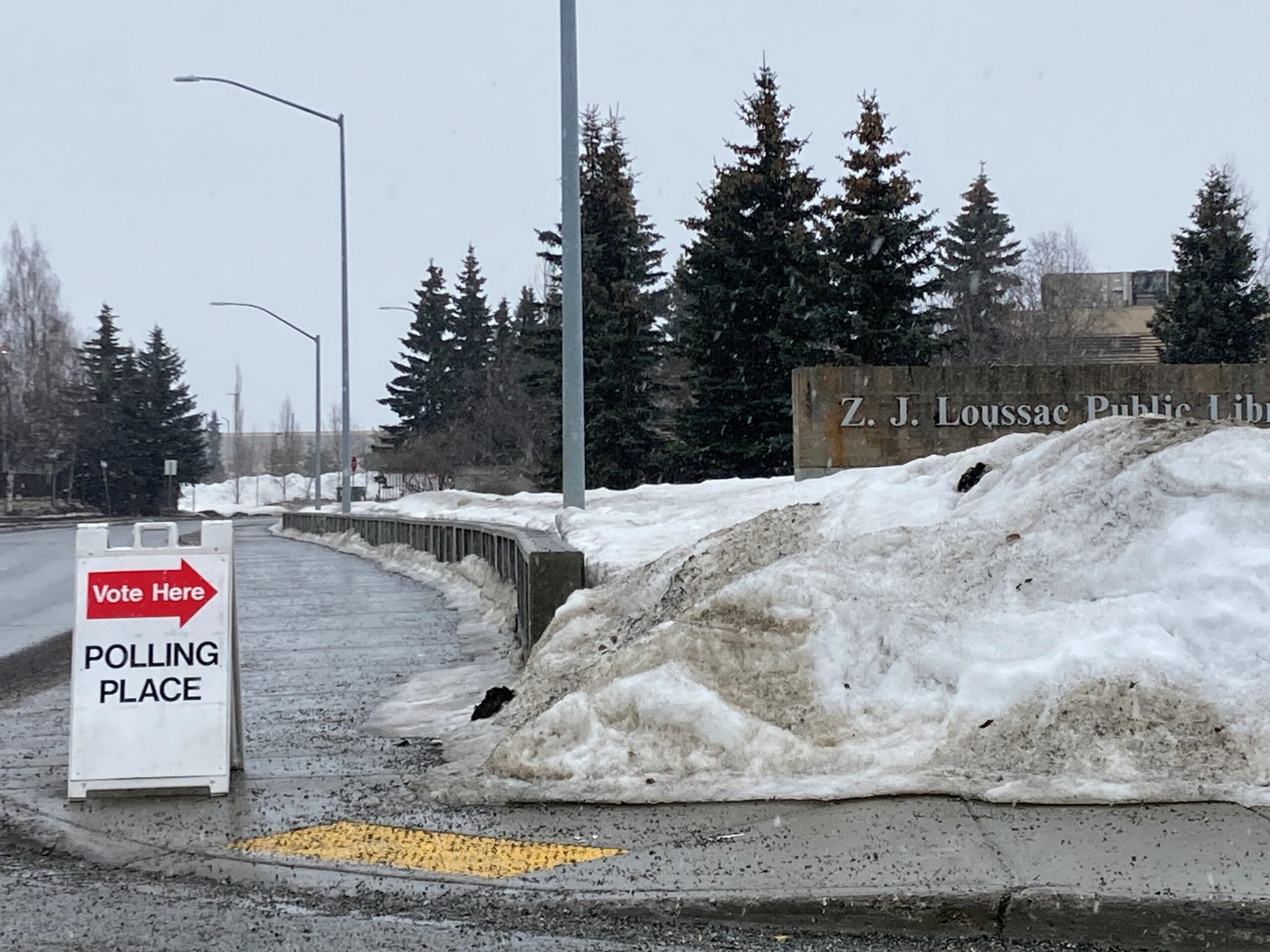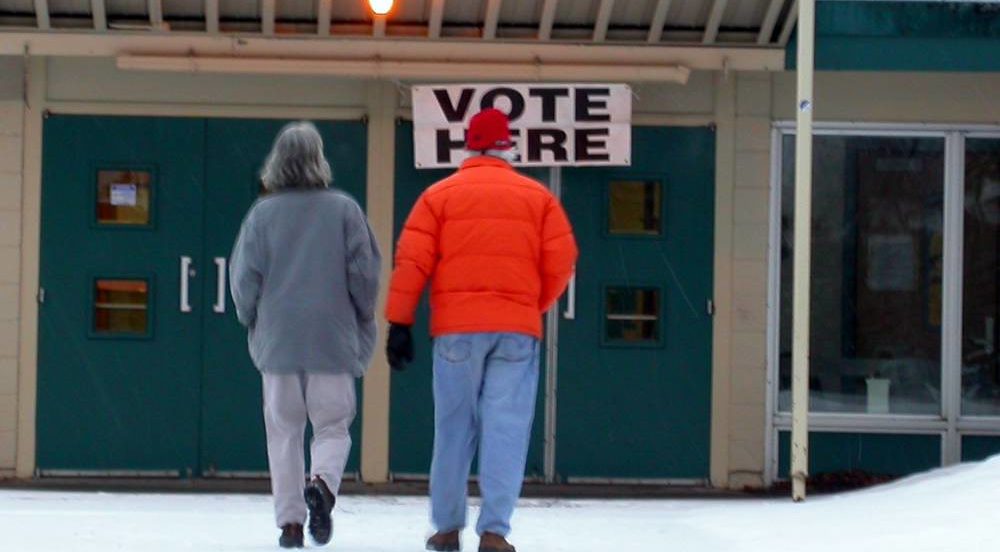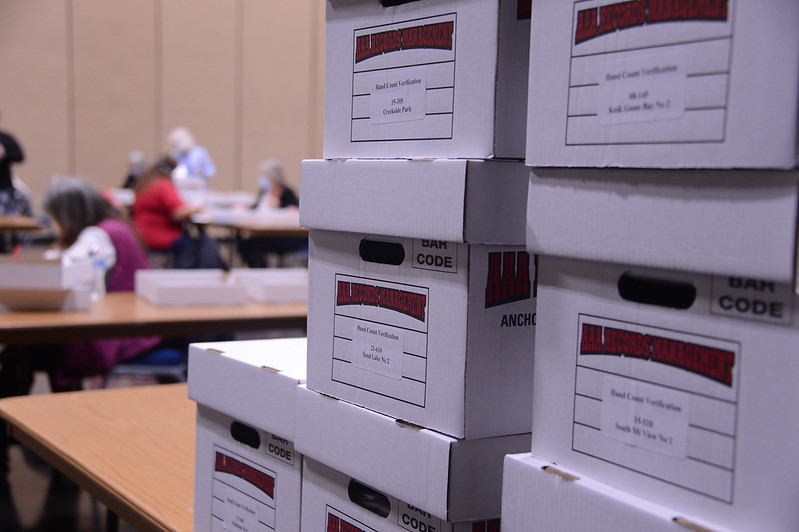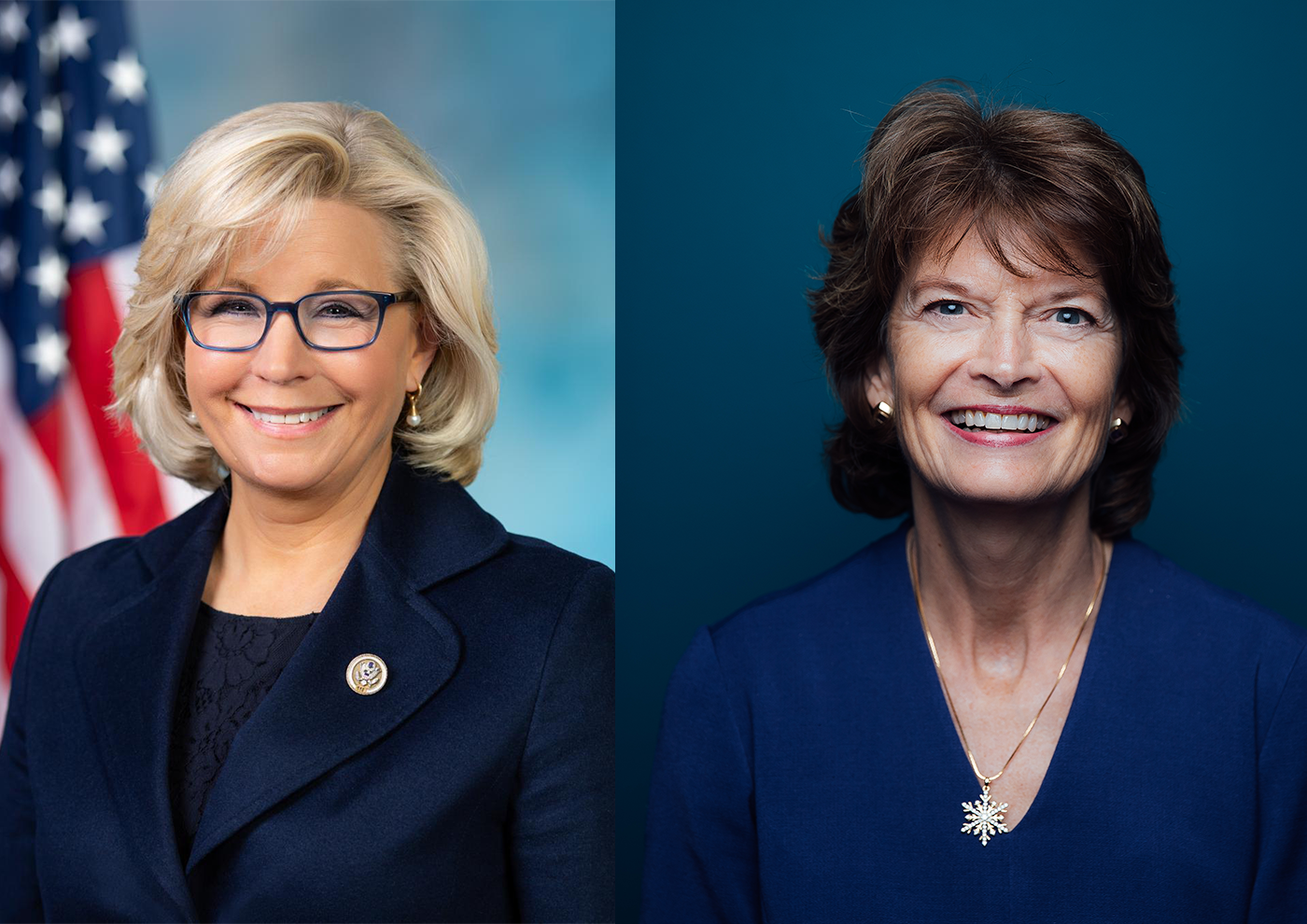Nonpartisan open primaries and ranked choice voting in Alaska
Learn more about Alaska’s open pick-one primaries and ranked choice voting election system.
In 2024, Alaska voters for the second time will vote using nonpartisan open primaries and ranked choice general elections. Several other states and Washington, DC, are looking to adopt the same changes. Our research in the four years since Alaska voters approved the changes can help those in other states decide what type of approach to elections will work best for them.
In the primaries, voters choose one favorite from a list of all the candidates. The top four candidates in each race, regardless of party affiliation, advance to the ranked choice general election. In general election races with three or more candidates, voters rank the contenders from most to least favorite.
Alaska’s current system applies to the races for US House, US Senate, governor, and state legislature. The presidential election is a little different. Alaska’s Republican and Democratic parties still control the presidential primaries, but Alaska uses ranked choice voting in the general election to determine which candidate receives the state’s three electoral votes.
Key research findings by Sightline found the following:
- More than half of primary voters split their tickets in the 2022 primary election, meaning they voted for members of different parties in different races.
- Independent candidates had an easier time running and winning.
- Moderate Republicans with more widespread appeal were less likely to lose in the primaries to far-right competitors.
- Ranked choice voting dampened the “spoiler effect,” allowing two members of the same party to run in the general election without having to worry so much about splitting the vote.
- Voters could support the candidates they liked rather than settling for a candidate they thought would win.
- Alaskans ended up with a more politically mixed and moderate slate of winners that reflected the independent/moderate Republican electorate of Alaska.
Please also feel free to check out our free-use graphics and 2024 general election FAQ.
📃Research and Analysis
Post-election review
Open Primaries and Ranked Choice Voting Strengthened Moderate Republicans in Alaska’s Legislature
Fewer hardliners won office, leading to an overwhelmingly bipartisan Senate majority, a hard-fought win on education funding, and the ability to neutralize culture warriors.
Mirroring the Nation, Voter Turnout Dropped in Alaska’s 2022 Election
How a democracy data analyst assesses changes in voter turnout.
Nonpartisan Open Primaries Let Alaskans Choose Values Over Party
More than half of voters in the 2022 midterm primaries split their tickets between candidates from across the political spectrum.
Alaska Primary Voters Had More Choice in 2022
A larger, more diverse, and competitive candidate pool coincided with the introduction of open primaries and ranked choice voting.
Alaska’s Midterm Elections Yield Mixed Results (But in a Good Way)
In the state’s first full ranked choice election, the same pool of voters elected candidates from across the political spectrum.
What Peltola’s Win Can Teach Alaska (and America)
Lesson #1: The electorate is not binary.
Compare Cheney and Murkowski’s Political Fates—It’s All About the Primary
Forget the general election for a moment. It’s how we run primary elections that decides who’s even a contender.
A Fairer Election System in Alaska Helped More Independents Win Office
Open primaries and ranked choice voting likely led to greater political diversity in the Alaska legislature, while their effect on age, gender, and race was less apparent.
📰In the news
Sign up for our monthly Democracy + Elections newsletter, and follow Sightline’s Alaska Research Director, Jeannette Lee, on Twitter here
💬Pre-election news and discussion
For a country bogged down by political polarization, the run-up to Alaska’s first ranked choice election might seem refreshing: a Democrat talking openly about family ties to a Republican Congressman; a Republican giving shout-outs to union members; and voters with the power to rank candidates from the opposing party.
In Alaska’s special election to serve out the term of late US House Representative Don Young, cross-party outreach has clear benefits for both voters and candidates. The upsides of weighing both sides may not exist in every ranked choice election, but they do in this one. The two Republicans and one Democrat in the race all have paths to victory made all the more viable by courting voters from both parties. And voters have the opportunity to rank all three candidates, meaning they shouldn’t immediately write off candidates from the opposing side.
All Americans should have equitable access to the ballot box. But conventional political wisdom assumes Republicans benefit from limiting voting access for people they believe are more likely to vote for Democrats, including people of color, recent immigrants, young people, and the economically disadvantaged. On the other hand, Democrats supposedly benefit from including them all. And so, we have one party incentivized to help eligible voters vote, and one incentivized to block certain demographic groups. The politicization of election administration is especially fierce in 2021, with more than a thousand pro-voter and anti-voter election bills introduced in state legislatures and Congress. GOP lawmakers recently passed voter suppression laws in three swing states: Georgia, Florida, and Arizona. Other states, including Montana, Massachusetts, and Virginia, passed pro-voter laws in 2021.
In Alaska, lawmakers have laid the foundation for both parties to put the interests of the electorate ahead of partisanship. A bill in the House, sponsored by Democrats, would make absentee voting more convenient. Another bill, backed by a Senate Republican, seeks to restore faith in elections. Neither bill made it to the floor in the 2021 session of the Alaska Legislature, but they’re both teed up for next time. A sensible combination of the two could give us election laws that treat Alaska voters like customers, not criminals. Let’s hope the legislature can get this done in time for the primary in August 2022.
Two days after pro-Trump extremists overran and trashed the Capitol, Senator Lisa Murkowski, an Alaska Republican, called on him to resign and signaled a willingness to officially break from the Republican party.
“I will tell you, if the Republican Party has become nothing more than the party of Trump, I sincerely question whether this is the party for me,” she told the Anchorage Daily News on January 8.
Murkowski is the Republican party’s version of a black sheep. She voted against the nomination of Brett Kavanaugh to the Supreme Court, for example, and frequently called out the former president for bad behavior. She is also pro-choice. Though she is a Republican from a red state, many of her supporters are moderates and Democrats. Her ability to go even further—demanding a presidential resignation and talking openly about leaving the Republican party—coincides with Alaska voters adopting new open primary and ranked-choice voting systems last November. Alaska’s election reforms grant Murkowski even more freedom to follow her conscience and be pragmatic.
In 2020, an outsized share of our pandemic doomscrolling involved elections. But it wasn’t just polls and races keeping us up at night. The typically ho-hum logistics of voting, absentee ballots, and ballot-handling had us stressing, too.
Absentee voting is a perfectly reasonable and secure way of casting a ballot, successfully employed since the Civil War. Most Americans vote in person, but avoiding the polls this year in favor of voting remotely was the obvious way to minimize exposure to the virus. As states were mobilizing for a historic flood of absentee ballots, unfounded tweets from the White House turned what should have been a straightforward, nonpartisan process into one that was intensely political. These attacks by President Trump on absentee voting turned elections administrators and the routine procedures they oversee into headlines.
Stress-free, effective elections won’t make for great TV, but that likely means they are working smoothly for voters—and democracy. Here are six ways Alaska can make its absentee voting process boring again:
Alaska’s midterm elections were a win for moderate politics. A moderate Republican regained her US Senate seat. A moderate Democrat will continue to serve as Alaska’s lone Congressperson in the US House. A conservative Republican returned to the governor’s mansion, while the state legislature appears poised to form a bipartisan majority in the Senate, with a much smaller chance the House does the same.
In the state’s first regular ranked choice general election, the politically mixed results reflected the independent streak of Alaska voters. The pairing of the open primary with ranked choice voting yielded a group of winning candidates that, collectively, is moderate and independent, just like Alaska’s electorate. The system also helped to check extremist candidates; was easy for voters to understand; reduced the power of political parties and hyperpartisan primary voters; and ensured no candidate won without a majority in the final round.
In a trailblazing win for election reform, Alaska voters passed an initiative that introduces ranked choice voting to all general elections, starting in 2022. The measure also institutes open top-four primaries and brings more transparency to the identities of donors funding political campaigns.
The success of Ballot Measure 2, also called the “Better Elections Initiative,” puts Alaska in position to become a national model for fixing polarized politics by incentivizing candidates to draw votes from a broader segment of the political spectrum. And it clears the way for Alaskans to support Independents and smaller political parties in general elections without fear of “wasting” their votes.
Alaskans voting in the 2020 general election no longer need a witness signature to vote absentee. The court-ordered change will likely prevent the disenfranchisement of hundreds of voters. It’s an encouraging sign in a state that has left unexplored many options for accommodating record numbers of absentee voters.
The requirement to have a witness sign one’s absentee ballot envelope is an unnecessary regulation that should raise hackles. Aversion to state overreach is quintessentially Alaskan, after all. If the witness rule actually made elections more secure, that would be one thing. But the signatures do not appear to protect against fraud and there is no process to check their legitimacy. Yet, in election after election, enforcement of what is essentially an empty gesture has disenfranchised hundreds of eligible absentee voters. Ballots with no witness signature get tossed out.
Alaska voters will decide on a slate of democracy reforms in November. On the ballot is a proposal that aims to fix several of the electoral system’s nagging imperfections, including candidates who win without majority support, the hidden influence of anonymous donors, and perverse incentives that reward partisanship over constructive public policy. The proposal is a citizen’s initiative called Ballot Measure 2, or the Better Elections Initiative. More than 36,000 Alaskans across the state supported its addition to the 2020 ballot.
If voters say yes, Ballot Measure 2 would change Alaska’s election laws in the following three ways: 1) introducing open top-four primaries; 2) using ranked choice general election ballots in statewide and national races, and; 3) stripping campaign donors of their anonymity.
In the weeks leading up to Anchorage’s city election in April, nearly all the temporary workers who had signed on to run it opted not to participate. Coronavirus had reached Alaska in mid-March and the city was hunkering down. As is the case across the country, Anchorage’s election workers tend to be older, making them statistically among the most vulnerable to serious complications from COVID-19. For them, staying home took priority. But the city’s Vote By Mail system made for a safe, smooth pandemic election.
Vote By Mail empowered Anchorage citizens to securely exercise their basic right without risking their lives. As a bonus, turnout of 31 percent and total participation of 71,382 votes were both high for a non-mayoral election. An alcohol tax, a somewhat controversial school bond measure, and an abundance of time at home may all have contributed to strong interest by voters.
🗳️Voter Education Resources
For the first time, Alaskans will use top-four open primaries and ranked choice voting to pick the winners in statewide races. Hundreds of thousands of voters across this vast state will need guidance on the new ways of choosing candidates. Turnout and results will hinge on the quality of the information they’re given. If enough Alaskans like the process, other states may decide to unlock the same opportunities for their voters and strengthen the trust and consensus required for a functional democracy.
It helps to remember that open primaries and ranked choice voting are easy to understand. Rather, change itself is the obstacle. This article provides some basic tools organizations can use to inform voters, including explainers, videos and other graphics, sample ballots, and mock elections.
Alaska is using a new way of voting in 2022. Each election will have two steps: a primary election where you choose just one candidate and the general election where you rank the final four candidates.
It’s easy. Here’s a practice election, using your favorite Alaska berries. The berry ballots are available in multiple languages, including certain Alaska Native languages. You can choose your preferred language from the drop-down menu at the bottom of the ballot page.
You are welcome and encouraged to download and share the graphic! To download, click on the image to enlarge, then right-click the image and choose “Save image as…”
Nonprofit and community organizations have permission to add their own logo in the lower-right corner to any of these graphics.


















